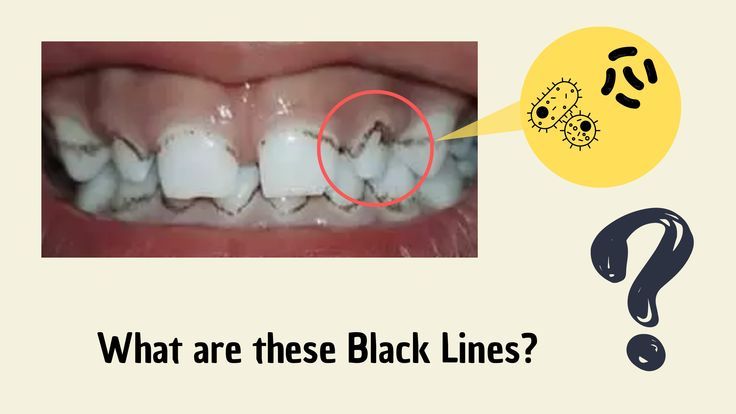Cavity Black Lines Teeth

The appearance of cavity black lines on teeth can be a cause for concern for many individuals. These dark lines or spots can be unsightly and may indicate a range of dental issues, from minor discoloration to more serious problems like tooth decay or gum disease. Understanding the potential causes and implications of cavity black lines is essential for maintaining good oral health and addressing any underlying conditions promptly.
What are cavity black lines?
Cavity black lines, also known as tooth decay or caries, are areas of teeth that have been damaged by acid-producing bacteria. These bacteria feed on sugars and starches in the diet, producing acid as a byproduct that can wear away the tooth’s enamel and create cavities. If left untreated, these cavities can progress and lead to more severe problems, including pain, infection, and even tooth loss.
The black lines or spots associated with cavities can be due to several factors, including:
- Tooth decay: As bacteria break down tooth enamel, they can create small holes or pits that appear as dark lines or spots.
- Acid erosion: Acidic substances, such as those found in certain foods and drinks, can wear away tooth enamel and create discoloration.
- Gum recession: As gums pull back from the teeth, they can expose the roots, which may appear darker than the rest of the tooth.
- Tooth staining: Poor oral hygiene, smoking, or consuming certain foods and drinks can cause stains on the teeth, which may appear as black lines or spots.
Causes of cavity black lines
Several factors can contribute to the development of cavity black lines, including:
- Poor oral hygiene: Inadequate brushing, flossing, and rinsing can allow bacteria to accumulate and produce acid.
- Diet: Consuming high-sugar or high-acid foods and drinks can contribute to tooth decay and acid erosion.
- Genetics: Some individuals may be more prone to tooth decay or other dental issues due to their genetic makeup.
- Dry mouth: A lack of saliva can reduce the mouth’s natural ability to neutralize acid and remineralize teeth.
- Certain medical conditions: Conditions like diabetes, gastroesophageal reflux disease (GERD), and eating disorders can increase the risk of tooth decay and other dental problems.
Symptoms and diagnosis
Cavity black lines may be accompanied by other symptoms, such as:
- Tooth sensitivity: Pain or discomfort when consuming hot, cold, sweet, or acidic substances.
- Tooth pain: Aching or throbbing pain in the tooth or surrounding area.
- Bad breath: Persistent bad breath or a bad taste in the mouth.
- Visible signs of decay: Dark spots, holes, or pits on the teeth.
A dental professional can diagnose cavity black lines through a visual examination, X-rays, and other diagnostic tools. They may also use a dental explorer to detect any soft spots or cavities on the teeth.
Treatment and prevention
The treatment for cavity black lines depends on the underlying cause and severity of the condition. Options may include:
- Fillings: Removing decayed tooth material and replacing it with a filling material, such as amalgam or composite resin.
- Crowns: Covering the tooth with a crown to protect it from further damage.
- Root canals: Removing infected pulp tissue and filling the tooth to prevent further infection.
- Extraction: Removing the tooth if it is beyond repair.
Preventing cavity black lines involves practicing good oral hygiene, including:
- Brushing: Brushing teeth at least twice a day with a fluoride toothpaste.
- Flossing: Flossing once a day to remove food particles and plaque from between teeth.
- Rinsing: Rinsing with water or a fluoride mouthwash to help neutralize acid and remineralize teeth.
- Regular dental check-ups: Visiting a dental professional regularly for cleanings, examinations, and diagnostic tests.
What causes cavity black lines on teeth?
+Cavity black lines can be caused by tooth decay, acid erosion, gum recession, and tooth staining. Poor oral hygiene, diet, genetics, dry mouth, and certain medical conditions can contribute to the development of cavity black lines.
How can I prevent cavity black lines?
+Preventing cavity black lines involves practicing good oral hygiene, including brushing, flossing, and rinsing with water or a fluoride mouthwash. Regular dental check-ups and a healthy diet can also help prevent tooth decay and other dental problems.
What are the symptoms of cavity black lines?
+Cavity black lines may be accompanied by symptoms such as tooth sensitivity, tooth pain, bad breath, and visible signs of decay. A dental professional can diagnose cavity black lines through a visual examination, X-rays, and other diagnostic tools.
In conclusion, cavity black lines on teeth can be a sign of underlying dental issues, such as tooth decay or gum disease. Understanding the causes and symptoms of cavity black lines is essential for maintaining good oral health and addressing any underlying conditions promptly. By practicing good oral hygiene, visiting a dental professional regularly, and being aware of the potential causes and symptoms of cavity black lines, individuals can help prevent and treat these unsightly and potentially problematic dental issues.
